Minimally Invasive Procedure Benefits High-Risk Patients
Transcatheter aortic valve replacement (TAVR) is a minimally invasive, catheter-based procedure for patients with severe aortic stenosis (AS)—a narrowing of the aortic valve. TAVR offers numerous benefits for patients who are not candidates for higher-risk and more invasive open-heart surgery due to their age and medical condition. Typically, patients can go home the following day after a TAVR procedure.
At Catholic Health, our St. Francis Hospital & Heart Center® (Roslyn, NY) performs more TAVRs than any other hospital on Long Island. TAVR is also performed at The St. Francis Heart Center at Good Samaritan University Hospital (West Islip, NY).
Frequently Asked Questions
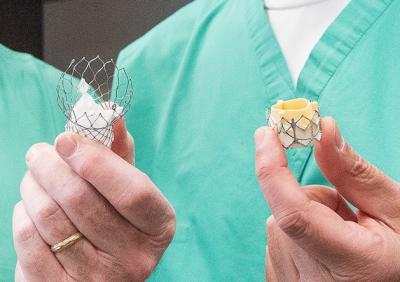
TAVR is performed by an interventional cardiologist who uses advanced cardiac imaging to guide a catheter through an access point to the artery in the heart. An artificial valve is attached to the catheter. Once the valve is securely anchored inside the aorta valve, the catheter is removed and blood flow is restored.
Access Points
Your doctor will discuss the best access approach for you.
Transfemoral. The most common approach enters through the femoral artery—a large artery in the groin. No surgical incision in the patient's chest is needed.
Other options use a minimally invasive surgical approach that makes a small incision in the chest. The catheter enters through a large artery or vein, including:
- Subclavian. An incision is made under the clavicle.
- Transcaval. A puncture is made from the inferior vena cava into the aorta.
- Transaortic. An incision is made into the top of the heart.
- Transapical. An incision is made into the bottom of the heart.
General anesthesia or moderate sedation anesthesia is used during a TAVR procedure.
Open-heart surgery is a high-risk, invasive procedure involving the opening of the chest cavity. TAVR is a minimally invasive, catheter-based procedure suitable for patients who cannot tolerate open surgery due to age or a medical condition.
TAVR has numerous benefits when compared with open-heart surgery, including:
- Less invasive
- Less time under anesthesia
- Smaller incisions
- Less pain
- Shorter hospital stay
- Shorter recovery time
Your cardiologist will help you prepare for your procedure with specific instructions for the night before your surgery, the day of your surgery, and post-surgery.
You will also review current medications you may need to stop taking before surgery and new medications you may need to take after surgery.
Any surgery has risks. Your cardiologist will review potential complications.
Most TAVR patients go home the day after have shown improvement within days or weeks. Recovery is shorter than open-heart surgery, which can take months.
The success of a TAVR procedure continues post-surgery. Follow-up visits with your cardiologist should be maintained to discuss:
- Improvement in symptoms
- New symptoms
- Current medications or need for new medications
- Correct functioning of the valve
Your cardiologist may recommend you join a cardiac rehabilitation program.
Nationally Recognized Care
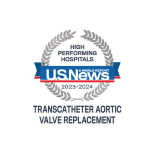
Transcatheter Aortic Valve Replacement
St. Francis Hospital is rated as high performing in TAVR.
View TAVR services
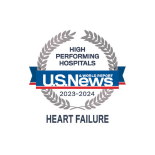
Heart Failure
St. Francis Hospital and St. Catherine of Siena Hospital are rated as high performing in Heart Failure.
View heart failure services
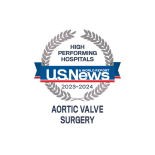
Aortic Valve Surgery
St. Francis Hospital is rated as high performing in Aortic Valve Surgery.
View vascular surgery services
TAVR Locations
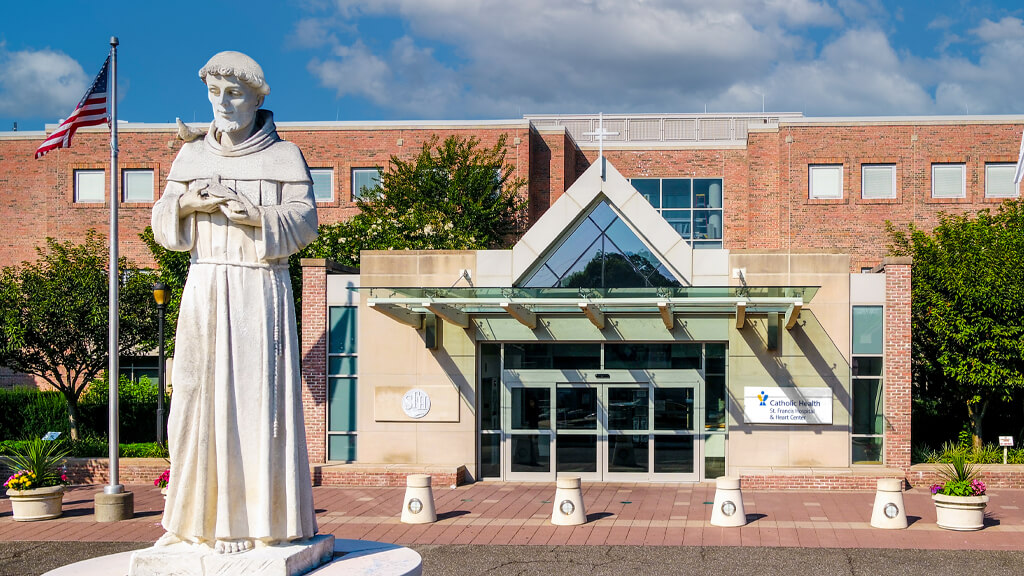
St. Francis Hospital & Heart Center®
Roslyn, NY Hospital Heart Center

St. Francis Heart Center at Good Samaritan University Hospital
West Islip, NY Heart Center

